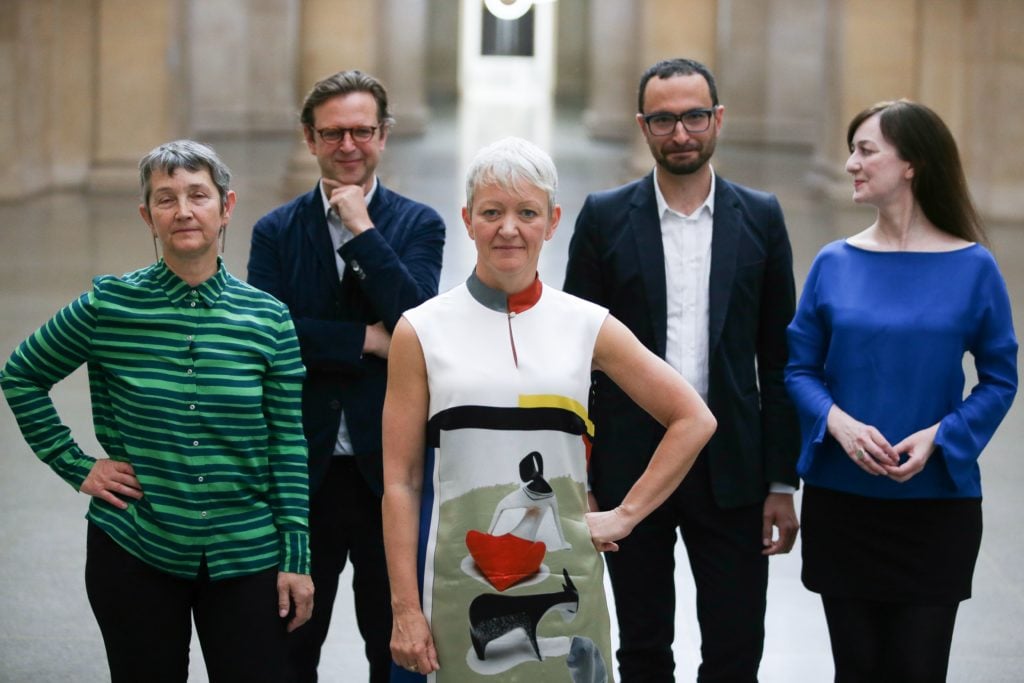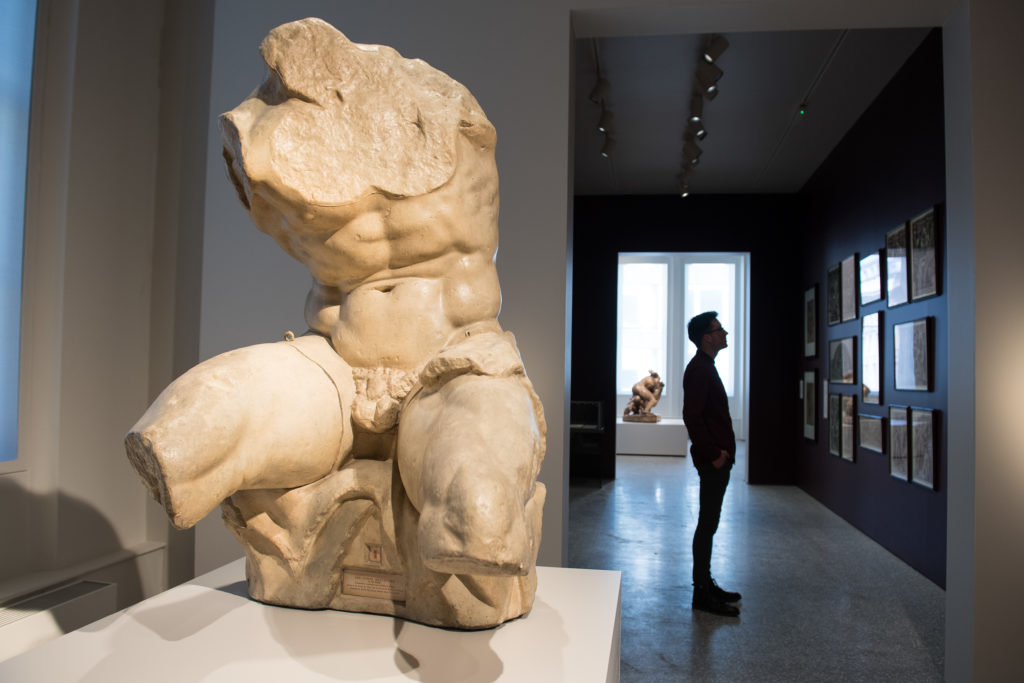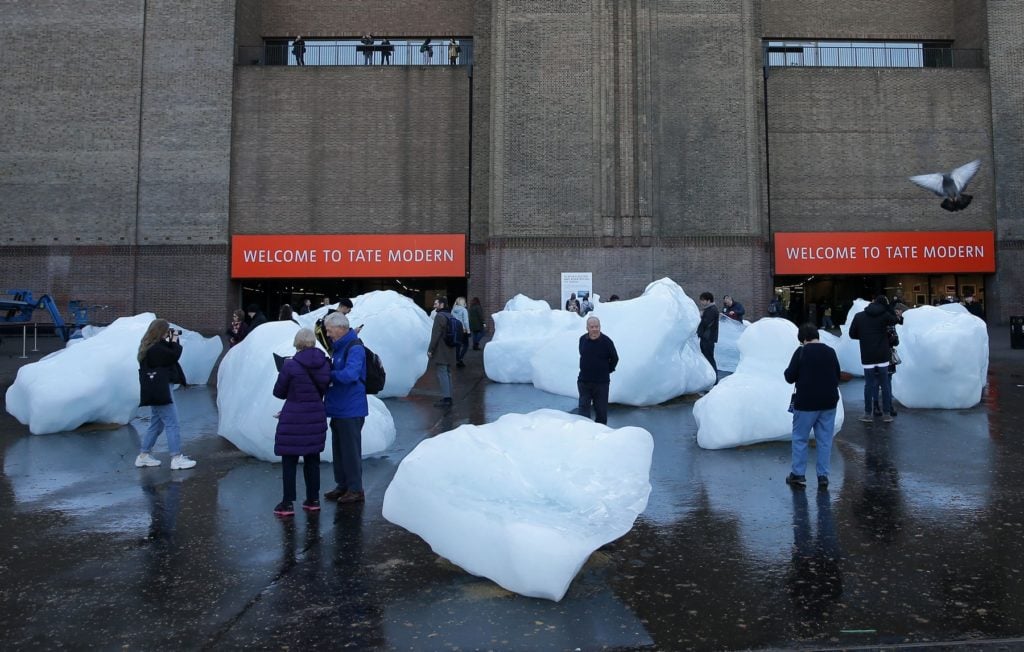Art World
Tate Modern Surpassed the British Museum to Become London’s Most-Attended Art Institution in 2018
London art museums saw an increase in attendance after a significant period of decline.

London art museums saw an increase in attendance after a significant period of decline.

Javier Pes

Tate Modern edged ahead of the British Museum to become London’s most-visited museum in 2018, according to the latest annual survey by tourism organization Visit England. The report reveals that UK museums managed to turn around a protracted decline in attendance last year—but some individual institutions still struggled to attract visitors and worrying long-term trends remain regarding museum attendance in the capital.
Last year saw a six percent increase in museum attendance nationally, partly helped by a boost in overseas tourists. An ever-weakening pound has also made staycations more attractive for British vacationers. But that modest increase has not corrected a longer-term drop in London in particular: From 2015 to 2017, the British Museum, National Gallery, and the National Portrait Gallery have seen a combined dip in attendance of around 16 percent.
Some attribute the overall decline to the end of the “halo effect” of the 2012 London Olympics, which boosted the capital’s international profile. But that does not explain why some institutions have done well while others have lost (and then partially recovered) different groups of visitors, notably Londoners, and people living in the South East of England.

The new-look Royal Academy of Arts was unveiled in May, 2018. Photo by Jeff Spicer Getty Images for Royal Academy of Arts.
Institutions with the most improved attendance last year include the Royal Academy of Art, whose audience shot up by 50 percent thanks in part to its David Chipperfield-designed expansion.
The Victoria and Albert Museum’s attendance continues to buck London’s downward trend. Last year, when many of its peers experienced a decline, the V&A’s visitor numbers increased by four percent, nearly breaking the 4 million mark. The museum of art and design has added an impressive 1 million visitors since 2016, boosted by high-profile temporary exhibitions on such subjects as Winnie-the-Pooh books and Frida Kahlo’s wardrobe.
While Tate Modern’s attendance rose by nearly four percent to 5.87 million, buoyed by its blockbuster Picasso exhibition, Tate Britain’s attendance was a very different story. In 2018, the museum of British art’s visitor figures fell by 28 percent, a reversal in fortune after a record-breaking year in 2017. That tumble came despite the launch of the Tate group’s millennial-friendly scheme offering £5 ($6) exhibition tickets to young people.
The British Museum also seen a fall in recent years. Last year, it attracted 5.8 million visitors, nearly one million fewer than it did four years ago, despite a crowd-pleasing exhibition of Rodin’s sculpture. A spokeswoman for the museum noted that it has seen some reduction in visitors from Europe over the past two years, but that the financial year of 2018–19 is looking very strong, with attendance up 10 percent. (To date this fiscal year, the British Museum appears to have edged out the National Gallery and Tate Modern to regain poll position—a testament to the fact that attendance measurements vary depending on how you slice them and are an inexact science.)

Visitors interact with blocks of melting ice during Ice Watch co-created by the artist Olafur Eliasson and geologist Minik Rosing outside Tate Modern, December, 2018. Photo by Daniel Leal-Olivas AFP/Getty Images.
London’s largest museums are free to visit, however the price of their temporary exhibitions continues to rise. The Visit England survey states that nearly half of visitors to venues are motivated to come because of a temporary exhibition.
Tate Modern’s most expensive shows can cost £25 ($30), while the V&A and British Museum have both broken the £20 ($24) barrier. Acknowledging that ticket prices at that level are prohibitive for many young people, the Tate launched a free-to-join membership scheme for 16- to 25-year-olds last year. One benefit: low-cost £5 exhibition tickets for members and three friends. Since April 2018, around 100,000 young people have joined Tate Collective, a gallery spokesman confirms. So far, no other institution has followed the Tate’s example.
The artist-led Royal Academy of Arts in London relies on self-generated income as it does not receive government funding, unlike the Tate, the British Museum, and the V&A. Healthy attendance at its special exhibitions is therefore crucial. The RA’s new chief executive, Axel Rüger, who joined this summer from the Van Gogh Museum in Amsterdam, will be heartened to see that post-expansion, the RA’s attendance shot up by 51 percent to 1.6 million visitors. That puts the RA on a par with St Paul’s Cathedral as a ticketed venue.
Tate St Ives, which won the Art Fund’s 2018 museum of the year prize, saw its attendance rise by an impressive 36 percent last year, up to 300,000 visitors, after it unveiled a long-awaited $26 million expansion. It is the only gallery in the Tate group that charges for access to the permanent collection and special exhibitions.